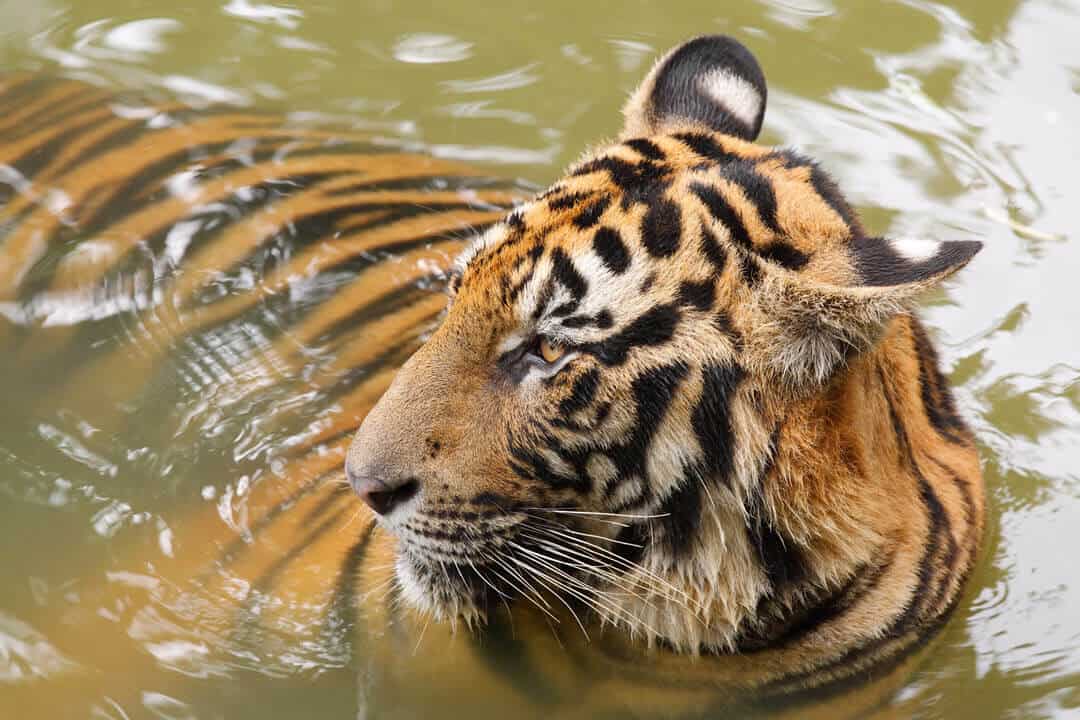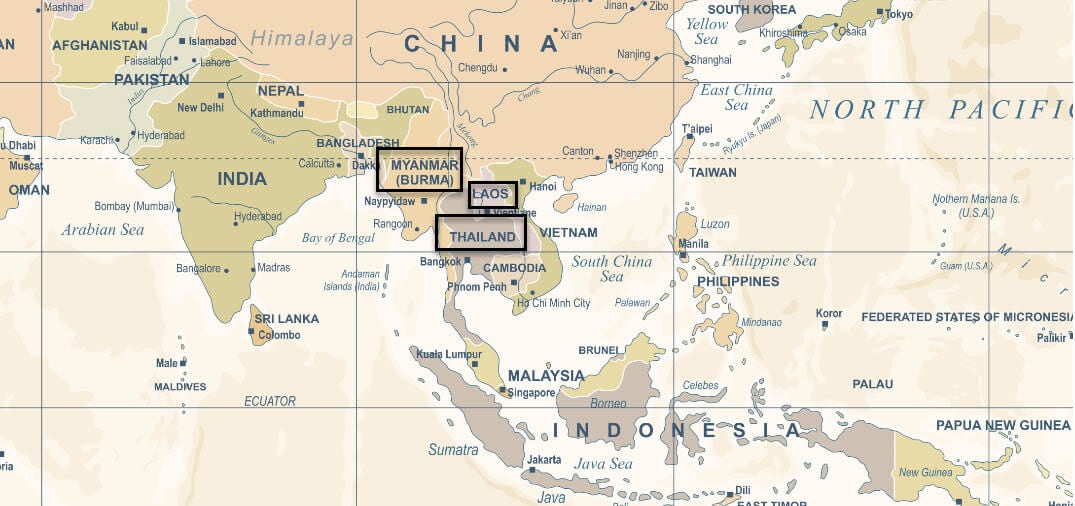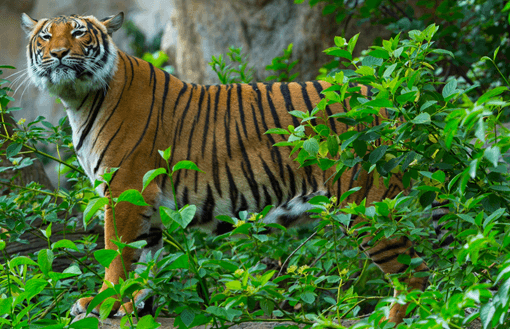The Indochinese tiger is a population of the Panthera tigris tigris subspecies found in Southeast Asia, primarily in Myanmar and Thailand.


Classification: A population of Panthera tigris tigris
Panthera tigris tigris is the nominate tiger subspecies – the original population of a species that has been split into subspecies. Within the Panthera tigris tigris subspecies, the Indochinese tiger is currently considered a clade – a group descended from a single ancestor. The Malayan, Bengal, South China and Siberian tigers are also separate clades (populations) within this subspecies. (Note: tiger species taxonomy is currently under review by the IUCN SSC Cat Specialist Group.)
Conservation Status: Critically Endangered
Population: The current population of Indochinese tigers is estimated at around 200 or less.
Lineage: The Indochinese tiger is a member of the Panthera lineage, along with other tigers, the lion, jagaur, leopard, snow leopard and clouded leopard. There are two genera in this lineage: Panthera and Neofelis.

Interesting Indochinese tiger facts
- the Indochinese tiger’s scientific name was first proposed in 1968.
- It is smaller than the Bengal and Siberian tiger.
- It is larger than the Sumatran tiger.
- The tiger’s stripes are narrower than other tigers.

More about the Indochinese tiger
Indochinese tiger populations have rapdily declined over the past few decades due to habitat loss and poaching.
Origin and history
Indochinese tigers once lived in Vietnam, China, Laso and Cambodia. Today, they are only found in Myanmar and Thailand.
Physical characteristics
The tiger has dark orange fur with stripes and a smaller head than a Bengal tiger. A male Indochinese tiger can be 8 to over nine feet long and weigh 300 to over 400 lbs.
Location and habitat
More than half of the population lives in Thailand’s tropical and subtropical forest, the Western Forest Complex, a large natural conservation area.
Between 2016 and 2018, 22 adult Indochinese tigers were identified from camera trap images in Myanmar.
The tiger has not been seen in Laos and Vietnam for several years and is believed to be extinct in those countries and in China.
The Indochinese tiger has not been seen in Cambodia since 2007. in 2023, India agreed to work with Cambodia to reintroduce tigers in the area.
Indochinese tiger behavior
Indochinese males have a home territory of approximately 35 to a little over 100 square miles, while the females’ home range is between 13 and 27 square miles.
Hunting and prey
The Indochinese tiger, a top predator in its habitat, preys on a variety of animals including deer, boar, wild bovine, porcupines, monkeys, fish and reptiles.
Mating, reproduction and lifespan
Indochinese tigers can mate all year long, but mate most commonly between November and April. The females gestation period lasts for approximately 3 to 4 months. New born tigers weigh around 2 lbs. The cubs begin hunting on their own at around 18 months.
Indochinese tiger conservation
Indochinese tigers are a critically endangered tiger population now only found in fragmented population around Myanmar and Thailand. The tiger’s rapidly declining population is primarly due to poaching and the illegal wildlife trade, as well as habit loss. Various tiger conservation groups are working to protect the tiger and prevent its extinction. Patrols in Thailand have increased.

References and quotes:
“Habitat connectivity is crucial for the conservation of species restricted to fragmented populations within human-dominated landscapes…Protected areas with tigers at the time of our surveys were highly isolated with high resistance to movement within the dispersal corridors, and four of them have lost their tiger populations since. Potential habitat patches outside of protected areas were also mostly isolated, but it was encouraging to find that there is ample potential habitat that tigers are not occupying.” – 2023 Habitat connectivity for endangered Indochinese tigers in Thailand | Suttidate, Steinmetz, et al.
“This study indicates that the Dong Phayayen-Khao Yai Forest Complex is one of the few remaining breeding locations of the Indochinese tiger.” – 2020 Opportunity for Thailand’s forgotten tigers: assessment of the Indochinese tiger Panthera tigris corbetti and its prey with camera-trap surveys | Ash, Kaszta et al.
(Note: Dong Phayayen–Khao Yai Forest Complex, located in Thailand, covers five protected areas in the Dong Phaya Yen Mountains and Sankamphaeng Range: Khao Yai, Thap Lan, Pang Sida and Ta Phraya National Parks, and Dong Yai Wildlife Sanctuary.)
Image: Khao Yai National Park, Thailand



















0 Comments